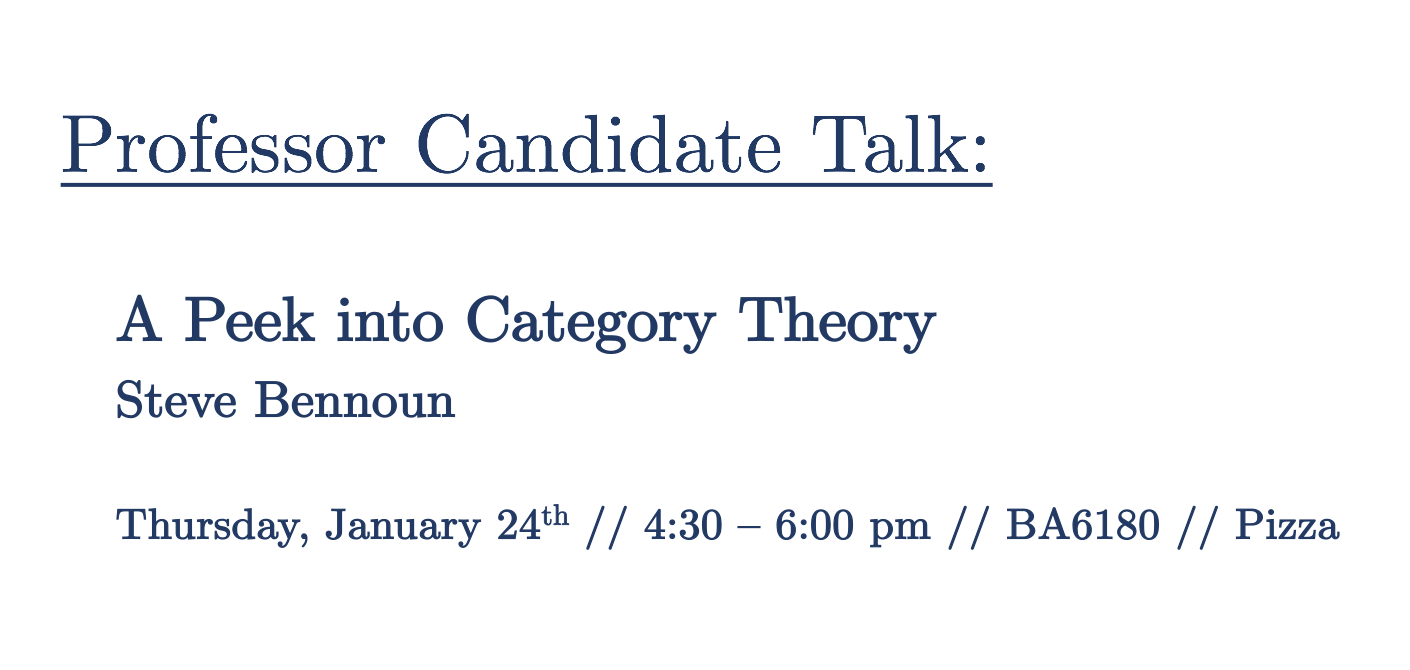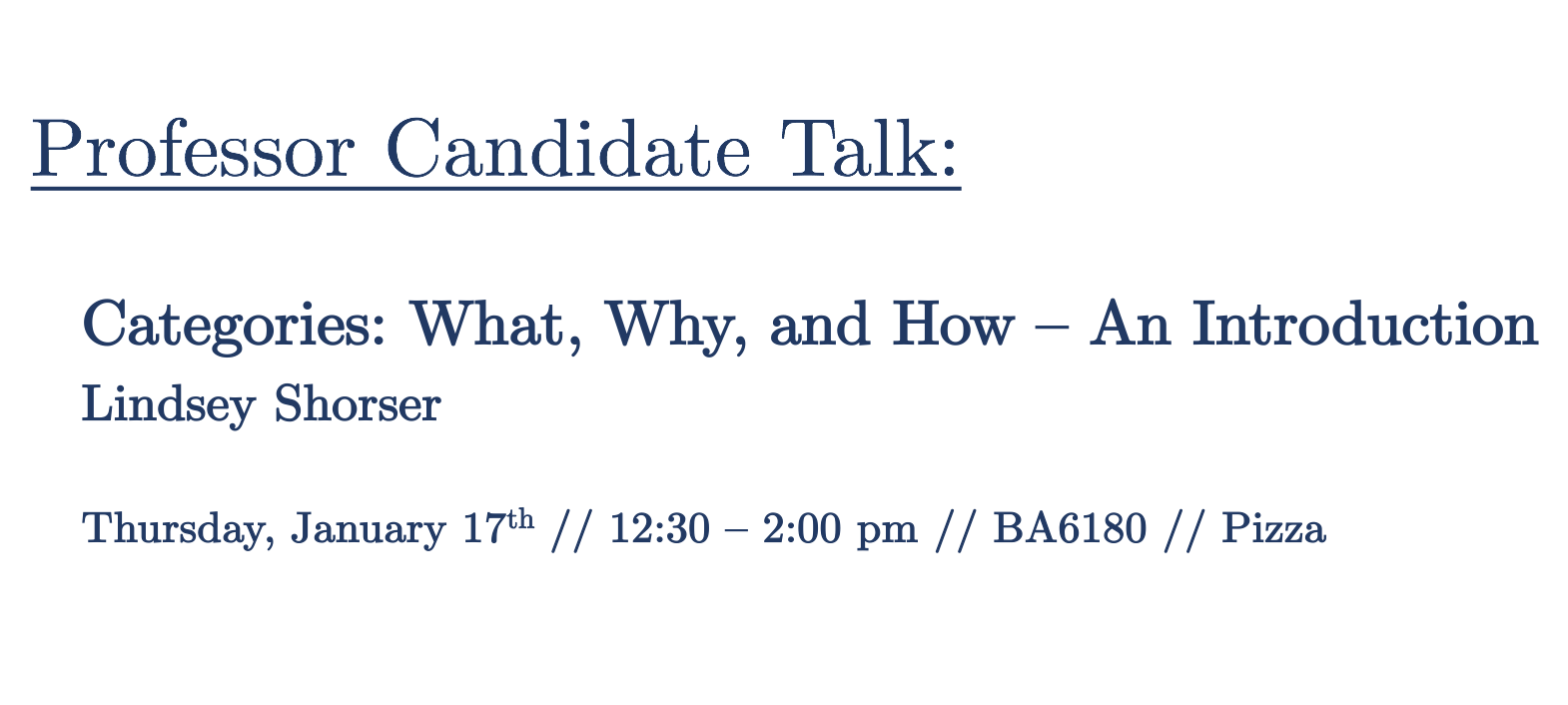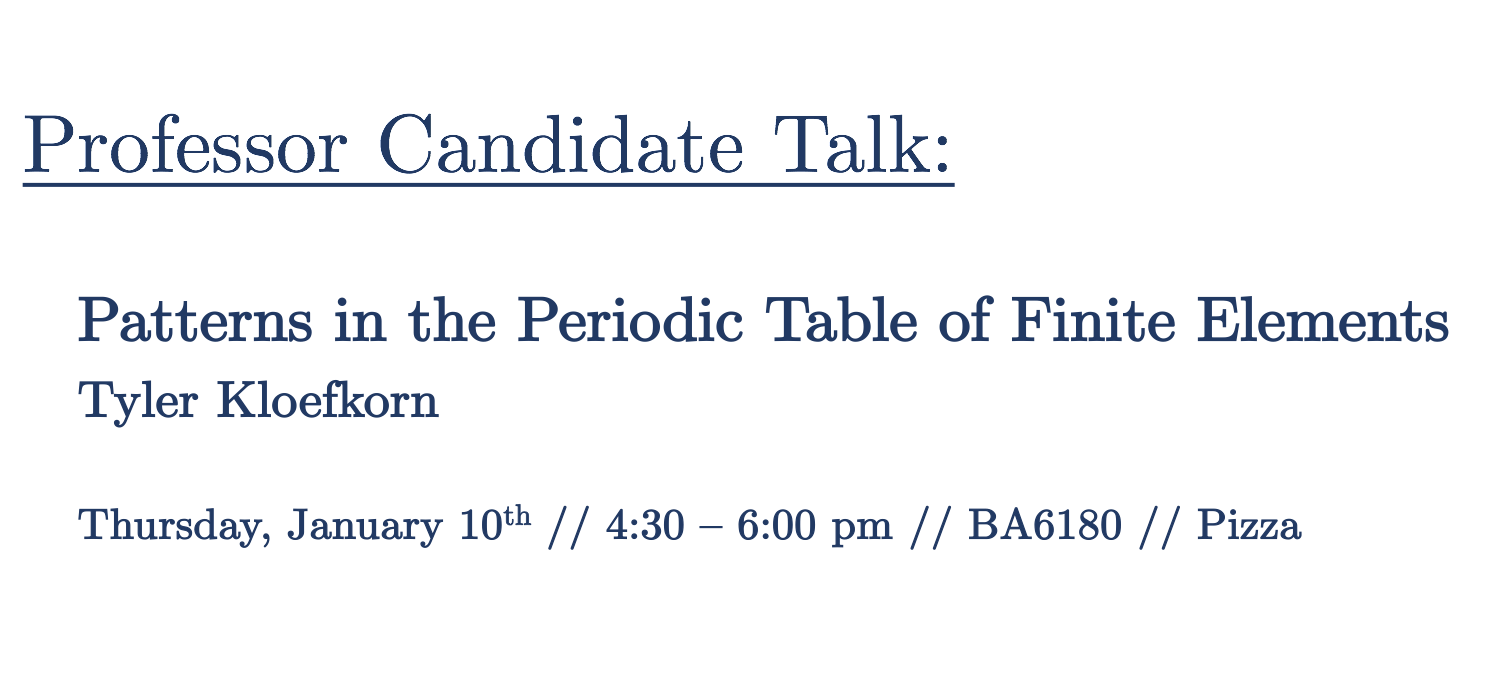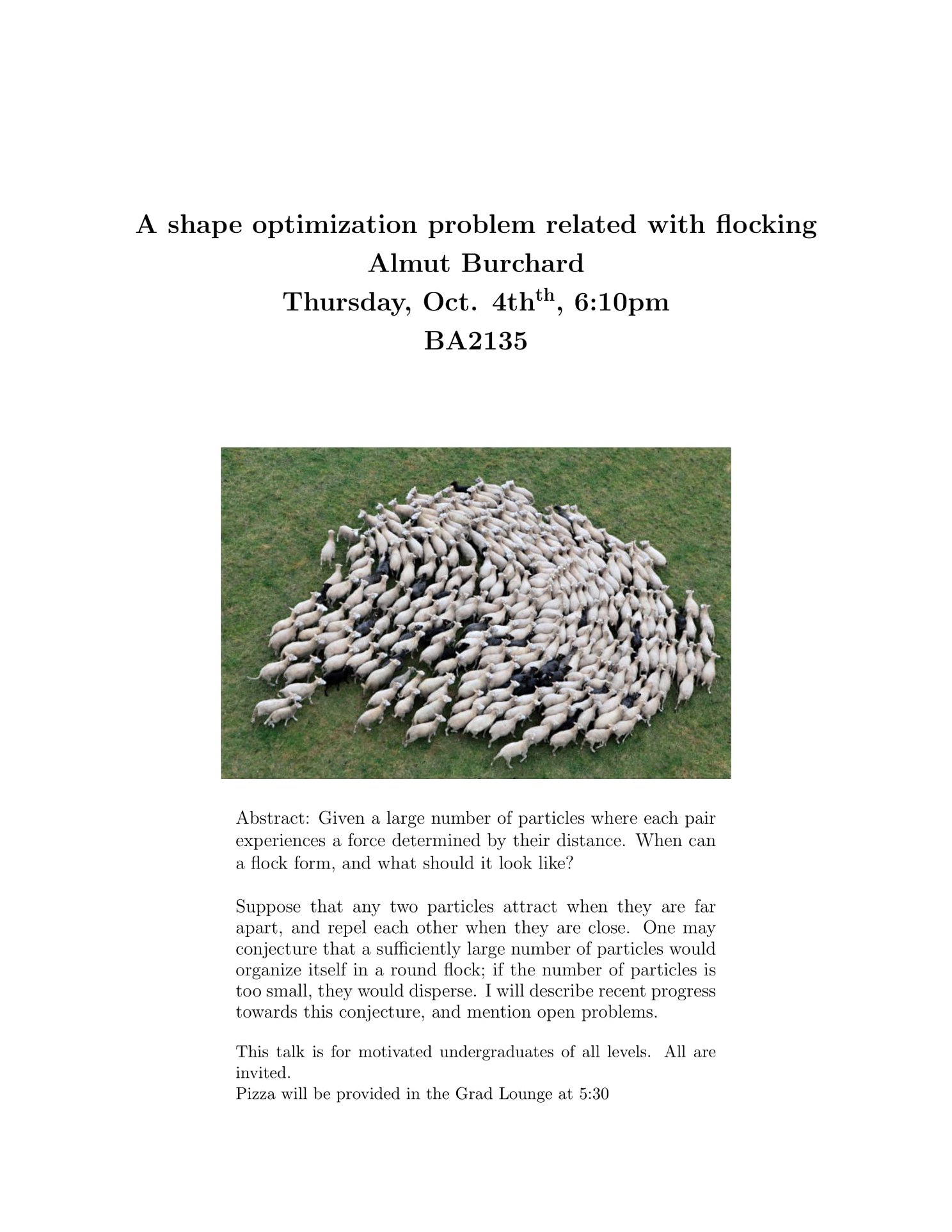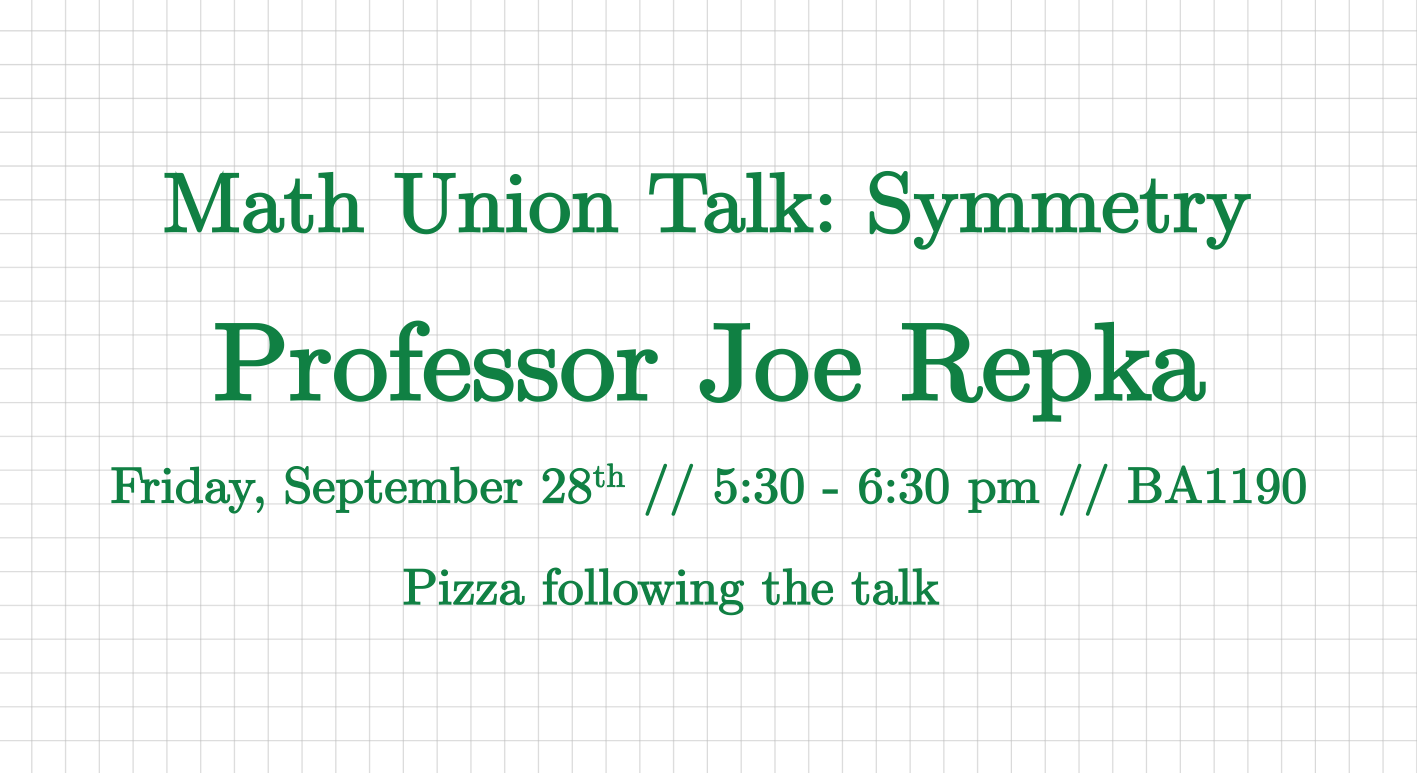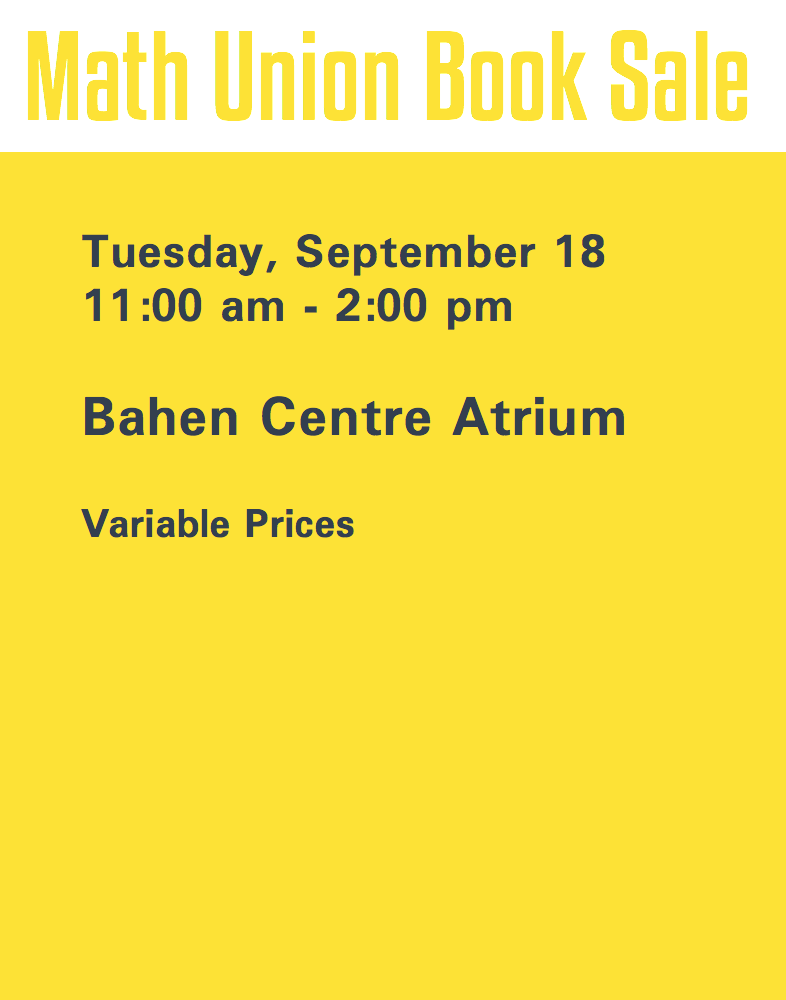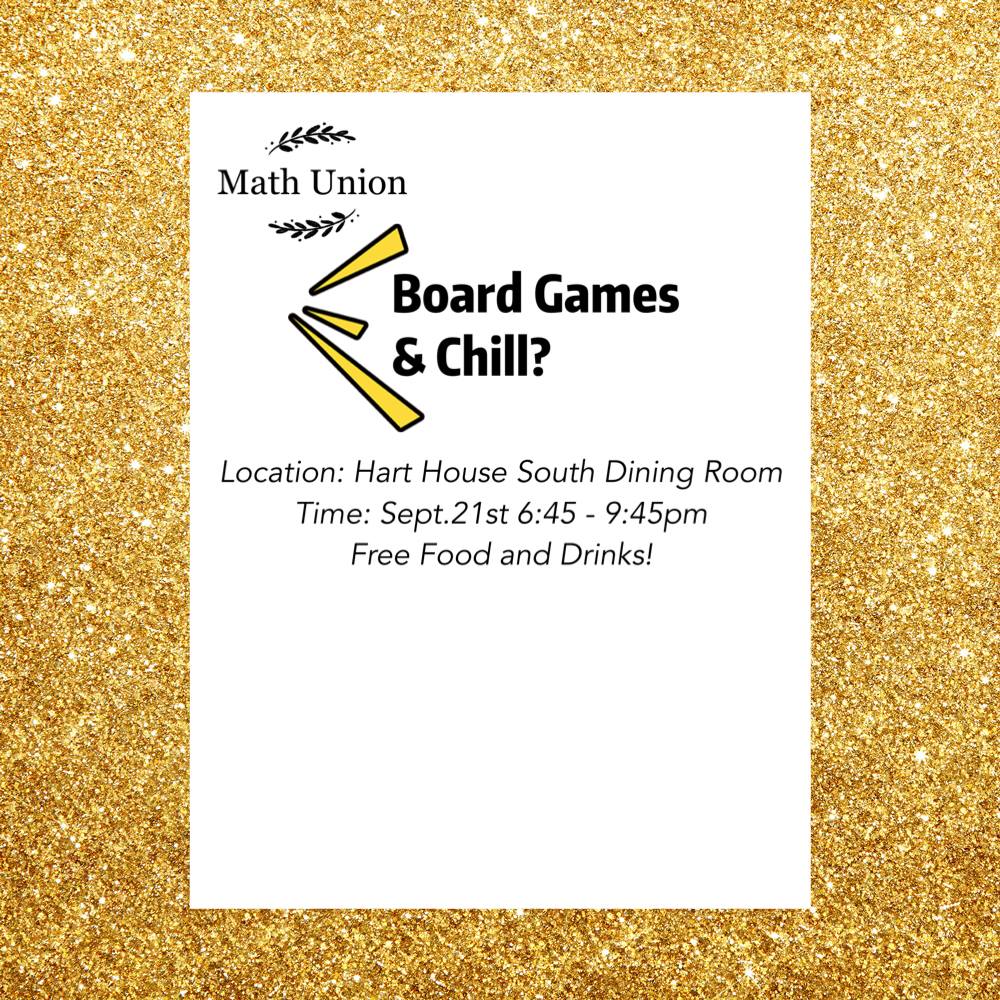Fabian Parsch, Wed Jan 16, 5:10 – 6:00, BA6183. Pizza begins at 4:30.
Title: Fantastic Nets and Where to Find Them
Abstract
Take a sheet of paper and draw three points in the plane. Now connect them with curves, but try to make the total length of all curves as short as possible. After some experimentation, you will probably arrive at a good guess of a best solution. But how do you know this is in fact a best solution? How do you know it is the only best solution? How do you even know there is a best solution? What if you have to connect four points instead? Five? n?
These are the kind of questions that are answered by the concept of geodesic nets.
The best thing about geodesic nets is that they are very easy to define, as we will see in the talk. The worst thing about geodesic nets is that not much is known about their behaviour, even in the simplest case: connecting points on the flat plane. If we look at other surfaces (like the sphere or a torus), things only get worse.
In this talk we will define what geodesic nets are, talk about some known results and discover some “animals“ in the zoo of nets together. Time permitting, we will also have a look where geodesic nets appear in architecture and material science.
The talk has only minimal prerequisites (see below). As long as you bring along an intuitive understanding of geometry, you are ready for take-off!
Prerequisites
Euclidean Geometry, Linear Algebra
Helpful (but not necessary!)
Elementary Surfaces (Sphere, Torus), Geodesics, Curvature
Also Helpful
You have been inside the Roger‘s Centre while the roof was closed.
Bringing your Laptop for some experiments is encouraged!


